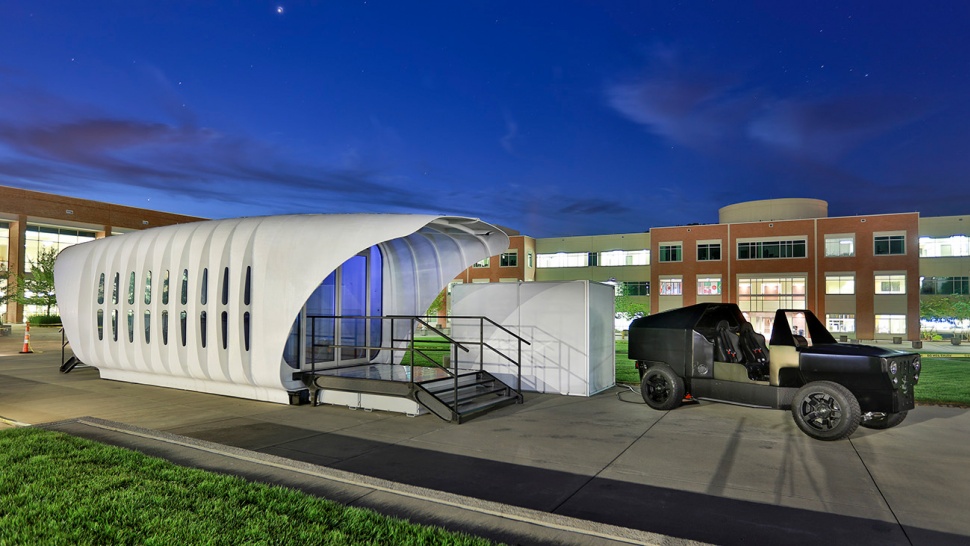- 1. Additive Manufacturing Integrated Energy project
- 2. Additive Manufacturing Integrated Energy project
- 3. Additive Manufacturing Integrated Energy project
- 4. Additive Manufacturing Integrated Energy project
- 5. Additive Manufacturing Integrated Energy project
- 6. Additive Manufacturing Integrated Energy project
- 7. Additive Manufacturing Integrated Energy project
To Brian Lee, living and relying on a power grid is an outdated way to get energy in one’s home. Lee, a Harvard graduate and partner at world-renowned architecture firm Skidmore, Owings, & Merrill, believes that storing and receiving energy via a grid is far too inefficient; so to fix the problem, he designed a one-of-a-kind 3D-printed home that no only pools its own energy, but also makes use of a companion vehicle if energy levels get too low. The house, which is currently on display at the University of Tennessee, is part of an ongoing project designed to gather information on the way cities consume energy.
On the outside, Lee’s 3D-printed home —called the Additive Manufacturing Integrated Energy (AMIE) project— looks incredibly similar to a portable recreational vehicle and less like a full-fledged home. During the design process, the team decided to outfit the structure with high-efficiency insulation, LED lights, and built-in solar panels capable of not only harvesting energy, but also sending power back and forth to the companion car as well. The house itself also uses minimal amounts of energy (even during peak operation), and cedes excess energy to assist in charging the vehicle.
“Instead of relying on the grid —which everybody says is a kind of inefficient way to store energy, because of distances— here you have it where you need it,” Lee tells Fast Company.
To make use of the vehicle’s energy (and to have the ability to send power to it), the team designed a wireless charging pad for it to park on top of just outside the 3D-printed home. Whenever the building requires more energy than it has stored, or opts to send its pooled energy to the natural-gas hybrid, the charger quickly transfers the required power. By creating this sort of microgrid, owners of this revolutionary house would likely never have to deal with losses in power or blackouts.
What particularly piqued Lee’s interest in creating a 3D-printed home was the sheer amount of energy and materials that 3D printing preserves. Unlike the traditional home building process, which sees a high amount of wasted construction material, 3D printing allowed the team to plan out an exact amount of ABS resin for the build with zero waste. Moreover, the resin has the ability to be recycled and reprinted should a rebuild be required.
“It uses material, spits it out, and that’s it,” Lee explains about the build process. “You don’t have to mill it, cut it, and throw what you don’t need away. Whatever you need, you use.”
Related: Forget plastic — Glowforge’s 3D laser printer makes objects with wood, fabric, and leather
Though this innovative energy producing home is merely a project designed to study energy usage, it boasts a number of features which make it ripe for real-world use. With so many people choosing to go “off the grid” for various reasons, Lee’s AMIE project figures to see a massive boost in popularity once word spreads of its efficiency and performance.
Until that time however, you’ll have to continue making those checks out to your local electrical company.
This was originally a post on our brother site, Digital Trends.









